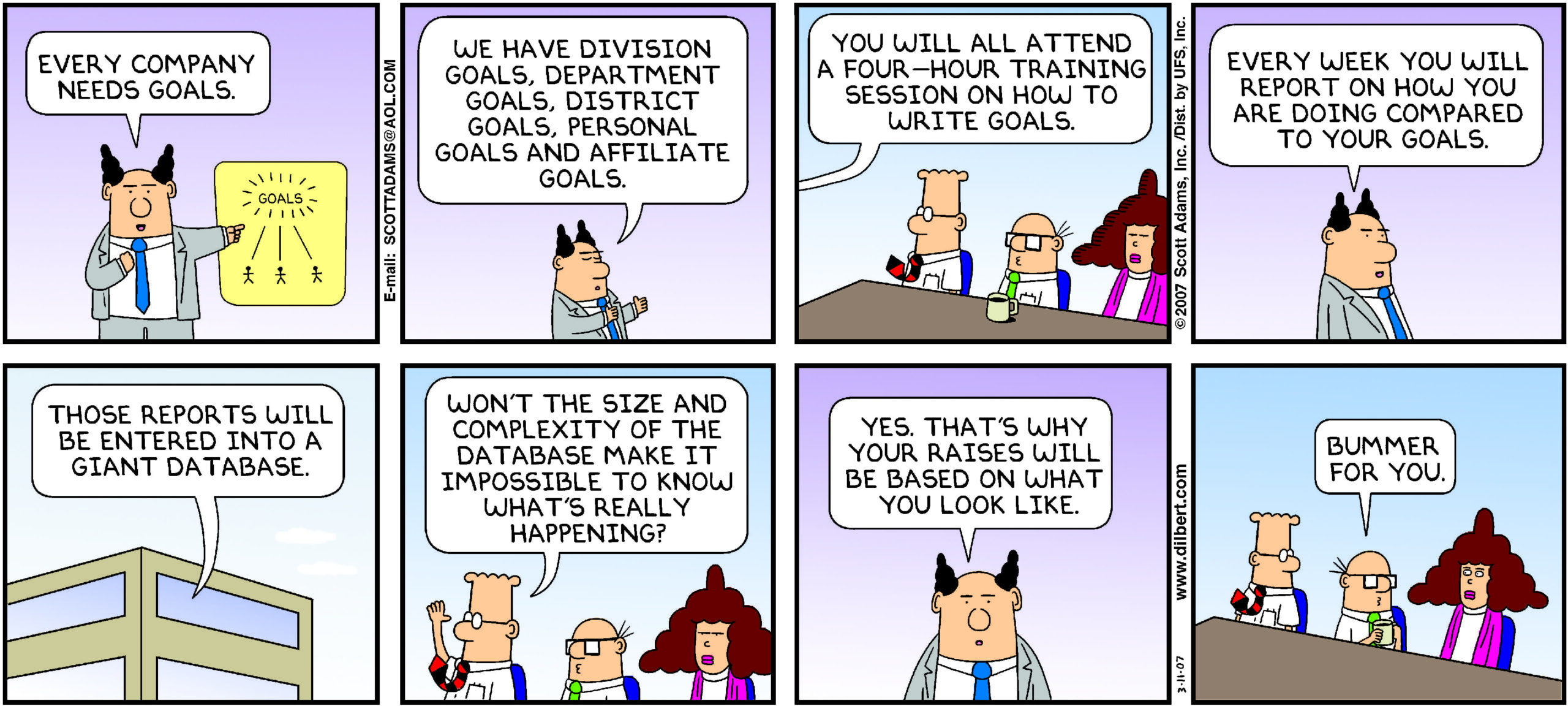I thought this DILBERT cartoon was appropriate to share after the launch of my new company Khorus a few weeks ago. Maybe back in 2007 (when this cartoon was published) it would have been a monumental task to collect and make sense of weekly employee input on their goals. The Khorus business management system is doing exactly that. We’re not just collecting the data for data’s sake, but analyzing the information and creating real-time reports and alerts for the CEO and division/department heads about how the company is tracking towards its goals. The system helps align employees to the corporate goals by helping them better understand how their individual contributions are supporting each one.
One of the ways Khorus is different is our focus on likelihood and quality of goals versus simple goal status or completion. Likelihood captures each employee’s confidence in goal attainment. It’s a much better metric than status or project completion percentage, which does not reflect the inherent risk in the portion of work that is not complete. The natural inclination of most managers will be to ask: “Where are you on the goal?” The typical reply – “Oh, I’m about 80% done” – doesn’t tell you much. The employee may not know how to get the last 20% done. Or, they could only be 20% done but know exactly how to achieve the last 80%.
Requiring employees to report on likelihood of goal completion each week makes them much more focused and holds them accountable. It also helps expose any business performance issues quickly. Over time, employees become better predictors of their work schedule.
In addition to likelihood, Khorus captures quality of deliverable as a core business performance metric. The emphasis shifts from simply getting things done to getting the right things done at a high quality. This focus on quality drives a culture of continuous improvement for long-term success.
So yes, it’s possible to know what’s really happening in your organization! And you’ll have more to base recognition programs on than superficial measures!






0 Comments